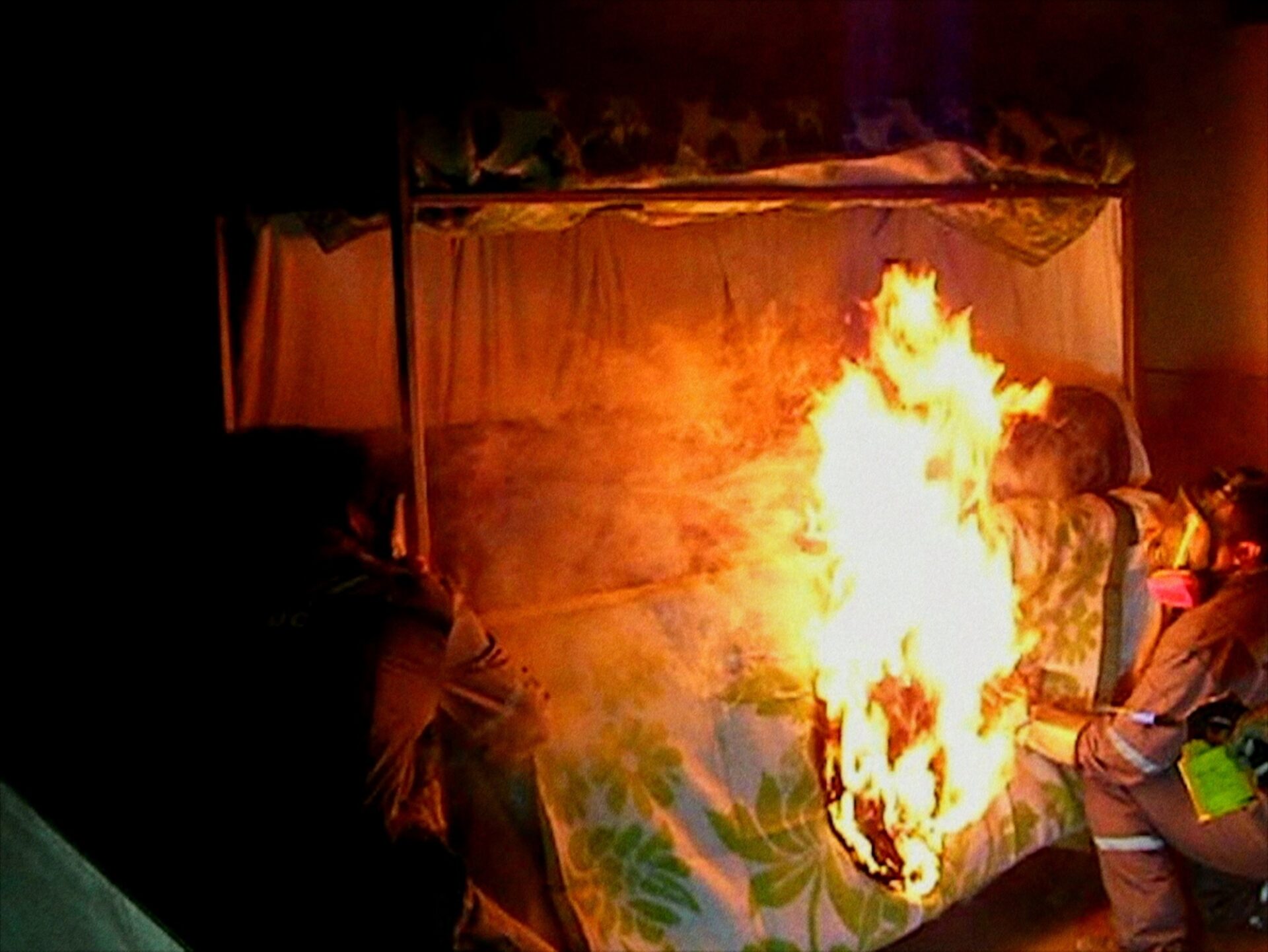Film Text: The Sky Is Red
Film Text: The Sky Is Red

The Sky Is Red
By Kelley Dong
A handheld camera trails police officers, firefighters, and prisoners through a maze of iron gates in the San Miguel prison in Santiago, Chile. Across cells and offices, an investigation of the devastating 2010 fire that killed 81 incarcerated men commences with a full reenactment of the day: A typical spat between men escalates. Soon, a man wielding a flamethrower—the supreme weapon against rivals in the prison—spreads a fire across the crowded cell. Now, only large streaks of ash remain smeared along the walls.
To estimate the magnitude of the fire during the reenactment, masked investigators ignite a mattress and toss it against a bed. The investigators and the camera operator stand at a distance, effectively mimicking those who stood outside and watched the burning prison. Filmmaker Francina Carbonell excavates the ghosts of the prison, setting them loose against the skeletal, straightforward formal language of the investigation footage. Cries of help fade in and out while the camera hovers over empty beds and locked doors, projecting the presence of invisible men frantically pushing and shaking the structure from within.
One by one, The Sky Is Red introduces those who testified during the initial investigation and the nine-month-long trial. Police officers and firefighters, including one lieutenant who refers to the case as an “unclear fire,” shift responsibility onto weak infrastructure, logistical confusion, and insufficient emergency training, the latter an irony proven by the sheer amount of guns, shields, and dogs equipped by the police to protect their own. Onscreen, the names of those who refused to open the gates for the dying prisoners continue to change as the officers hurry to shape the story in their favor, and when pressed for clarification, no one knows the answers. Only an offscreen disclosure from the trial reveals that a number of prisoners were threatened to alter their testimonies, and prompts us to scrutinize the image.
“Yes, there’s a bit of smoke,” one officer thinks to herself that day, after zooming her view from a security camera into the building. “They must be cooking.” The prison controls the security cameras, which sit in a booth across from the fire. The operators see only grey and black pixels, not the green, red, or blue of burning blankets. They do not hear men screaming out to bystanders and to the thousands of families who arrived in time for visiting day. Beneath the surface of the grainy recording lies a reality of human life that the guards do not want to see. For this purpose the camera—and its zooms and pans further away into a blurred vision of the truth—becomes an instrument of obfuscation. American prison abolitionist Ruth Wilson Gilmore famously describes prisons as “catchall solutions to social problems.” Security cameras embody the cold surveillance with which the state reduces incarcerated people to transient smudges on a screen that can be forgotten simply by turning away.
The total abandonment of the prisoners by the police emerges as one of few consistencies shared by the film’s many conflicting narratives. “May you burn alive,” one man recalls hearing from an officer standing directly across the building. Another survivor confirms this report. He quotes another officer: “May all the bastards die.” In Carbonell’s bleak reconstruction of reconstructions, only a tiny cellphone found in the debris contains any trace of life. Warm text messages between loved ones become panicked as the smoke floods the facilities. A short video of a baby running across the beach filmed on the phone serves as a time capsule for both subject and documentarian, for a past and a future now irretrievably lost.
